How Remote Healthcare Virtual Assistants Are Revolutionizing Patient Care
07 Jun 2025 By: Vlade Legaspi
Updated
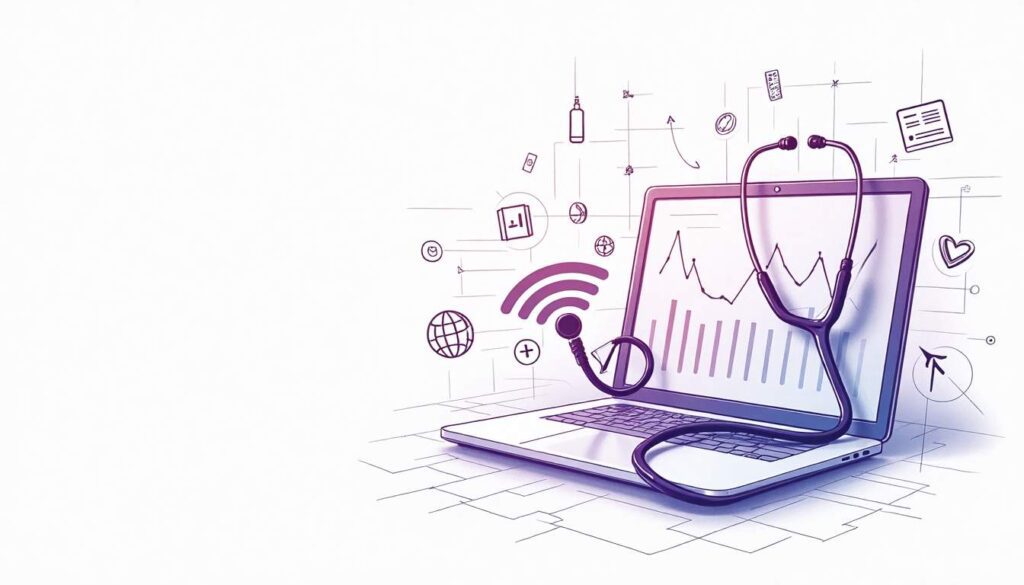
The healthcare industry leads in innovation, always changing to serve patients and providers. A major shift is the growth of remote healthcare virtual assistants. These tools boost patient care and change how providers work. This article explores how they reshape patient care today.
The Emergence of Remote Healthcare Virtual Assistants
As tech grows, AI and machine learning now power virtual assistants in healthcare. These tools speed up tasks, improve talk, and share fast info with patients. COVID-19 sped up their use as care moved away from face-to-face visits. This change reshaped patient contact and showed how key digital tools are for better care and results.
Getting to Know Virtual Assistants in Healthcare
Healthcare virtual assistants use AI to handle many tasks. They help patients and save time for doctors. People can use them on phones, tablets, or computers.
Examples of what they do:
- Book doctor visits
- Send follow-up messages after care
- Answer health questions
- Remind patients to take medicine
- Help check symptoms and guide next steps
- Share learning tools about health issues and treatments
These tools help patients stay informed and follow medical advice better.
The Role of AI and Machine Learning
AI and machine learning power remote healthcare virtual assistants. They learn from each use and get better at helping patients. This helps them give care that fits each person. They also scan large data sets to spot trends and catch health risks early. As they gather more info, they give doctors smart tips, which leads to better care.
Natural language processing (NLP) helps virtual assistants talk in a more human way. Patients can speak freely and get clear, helpful answers. This makes users feel more at ease and builds trust in the care they get. As these tools grow, they will link with wearables and telehealth, making care more connected and quick to respond.
Enhancing Patient Engagement

Remote healthcare virtual assistants boost patient engagement. They give easy access to info and support, helping people manage their own health. This shift to patient-focused care improves results. Digital tools make patients more informed and involved in choices. This builds confidence and trust, leading to better talks with doctors and more effective care plans.
24/7 Availability
Remote healthcare virtual assistants work 24/7, giving help anytime. This eases stress for people with chronic illness or post-surgery needs. Patients get answers fast, without waiting for office hours. This helps those in remote areas or with movement issues. Easy access to care boosts their comfort and trust in the system. Having help on hand improves the whole healthcare experience.
Personalized Communication
Virtual assistants adjust messages based on a patient’s history and needs. This builds a stronger bond with care providers.
Examples of personalized support:
- Sends reminders for meds and checkups
- Shares health tips based on a patient’s condition
- Helps patients follow treatment plans
- Offers learning tools tailored to each diagnosis
This custom care keeps patients involved and boosts results. It also makes their health journey smoother and more rewarding.
Streamlining Administrative Tasks
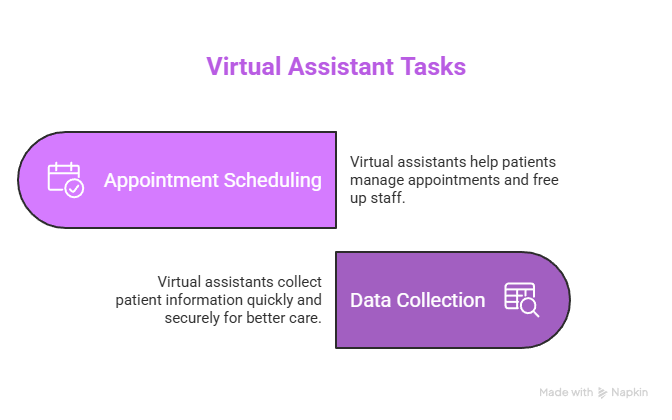
Doctors and nurses are healers, not data clerks. But every day, they’re buried in forms, schedules, and follow-ups. It’s exhausting, and it takes them away from the people who need them most. Remote virtual assistants quietly step in to help. They manage the routine stuff, like reminders and messages, so care teams can breathe, focus, and truly connect with their patients. These assistants learn as they go, becoming trusted partners. They don’t replace the human touch, they protect it. They give time back to the hands that heal.
Appointment Scheduling and Management
Booking a doctor’s visit shouldn’t be a hassle for patients or staff. But it often is. Virtual assistants step in to make things easier for everyone.
What they do:
- Help patients book, cancel, or change visits without long waits
- Free up staff from phones and paperwork
- Cut down on mistakes so care isn’t delayed
- Gently remind patients so they don’t miss appointments
- Give patients a simple, stress-free way to manage their care
It’s a small shift that brings more time, less stress, and better care for all.
Data Collection and Management
Virtual assistants make collecting patient info quick and simple. They gather key details before visits, so doctors can come in ready. This saves time and helps give better care. Patients feel more seen and less rushed. These tools also keep private info safe and follow rules like HIPAA. By looking at the data they collect, they spot patterns and needs, giving care teams smart insights. This helps providers plan better and use their time and resources where it matters most.
Improving Access to Care
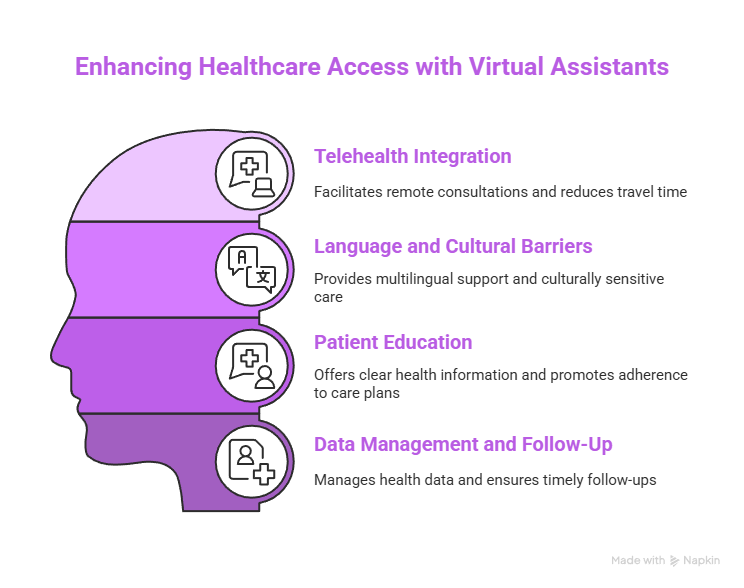
Many people, especially in rural or underserved areas, still face barriers to care. Remote virtual assistants help close that gap, reaching more patients through smart tech. They ease the load of admin tasks and keep people engaged in their care. With simple tools and steady support, they make sure no one feels left behind on their health journey.
Telehealth Integration
As telehealth grows, virtual assistants help make remote care simple and smooth. They connect patients with doctors from home, cutting travel and wait times.
How they help:
- Set up virtual visits with ease
- Support people with limited mobility or remote living
- Let patients book care and view records online
- Give patients more control over their health
This makes care more personal, easy to reach, and built around real-life needs.
Language and Cultural Barriers
Remote virtual assistants help break language and cultural barriers in care. They speak many languages, so more patients feel heard and supported.
How they create inclusive care:
- Talk with patients in their native language
- Share info that fits different cultures and beliefs
- Help build trust through clear, respectful talk
- Make sure every patient gets the same level of care
By honoring differences, they help all people feel seen, safe, and understood in their health journey.
Enhancing Patient Education
Remote virtual assistants do more than talk, they teach. They give patients clear, helpful info based on their needs and health conditions.
How they support learning:
- Explain meds, care steps, and health tips
- Share guides on staying healthy and avoiding illness
- Help patients understand their diagnoses
- Offer easy access to trusted health info anytime
This builds confidence, boosts health habits, and helps patients stick to their care plans for better results.
Data Management and Follow-Up
Virtual assistants aren’t just tools, they’re quiet companions in your care journey. They remember things when life gets busy: your meds, your next visit, that test you meant to schedule. They lift the weight of keeping track, so you can breathe a little easier. And when something seems off, they’re the first to raise a gentle flag, making sure your doctor sees you, not just your chart. For people living with daily health challenges, this steady presence offers more than reminders. It’s the soft presence you don’t see but always feel, someone who remembers what matters, stays with you in the stillness, and makes you feel cared for without a word.
Enhancing Clinical Decision-Making
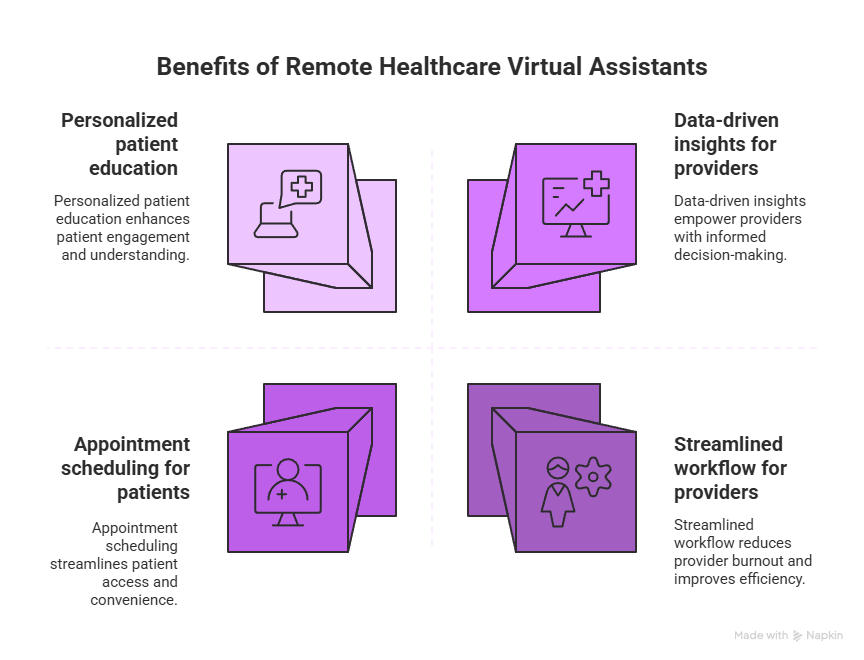
Remote healthcare virtual assistants don’t just help patients, they support doctors too. By using data and smart insights, they help providers make better choices for care. This tech takes on the busywork, giving doctors more time to listen, connect, and heal. It’s not just about speed, it’s about making space for real care, where every decision is backed by data and every patient feels seen. The result is a smoother, more focused healthcare experience for everyone involved.
Data-Driven Insights
Virtual assistants do more than organize, they think ahead. By studying patient data, they spot patterns in symptoms or how treatments work. This helps doctors choose care plans that fit better. It means faster answers and treatments that hit the mark. As they keep learning from new data, these assistants adjust and grow, staying in step with changing patient needs. That way, doctors always have the right info at the right time to give the best care possible.
Clinical Support and Guidelines
Healthcare professionals depend on trusted guidelines to make the right calls. Virtual assistants help by quickly sharing the latest research and updates, so providers stay current without the extra search. This keeps care rooted in solid, up-to-date facts. They also make teamwork easier by breaking down complex data into clear, useful points. In busy settings where many experts work together, this kind of support keeps everyone on the same page, focused, informed, and ready to give patients the care they deserve.
Patient Engagement and Education
Virtual assistants do more than help doctors, they support patients too. They share health tips and info that match each person’s needs, making care feel personal and clear. They remind patients to take meds and keep appointments, helping them stay on track. This steady support builds confidence and trust. It turns patients into active partners in their care, not just bystanders. When people feel informed and in control, they’re more likely to stick with their plans and feel better in the long run.
Streamlining Workflow and Reducing Burnout
One big benefit of remote virtual assistants is how they ease the daily load for healthcare providers. They take on routine tasks, giving doctors more time to focus on patients.
Examples of how they help:
- Book and reschedule appointments automatically
- Handle patient follow-up messages and reminders
- Enter and organize patient data
- Cut down time spent on paperwork
- Reduce stress and burnout for care teams
As healthcare keeps changing, these assistants help build a more balanced and patient-focused system.
Challenges and Considerations
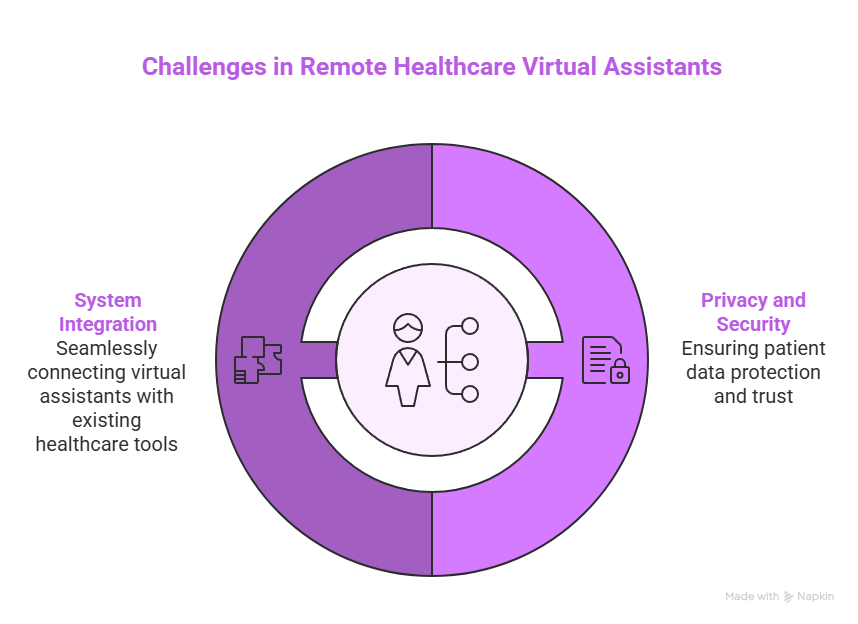
While remote healthcare virtual assistants bring many benefits, they also come with challenges that need attention. To use them safely and effectively, healthcare systems must ensure these tools are accurate, reliable, and secure. Trust, privacy, and proper use are key to making sure they truly support both patients and providers in a meaningful way.
Privacy and Security Concerns
Protecting patient data is a top priority in healthcare. Since virtual assistants manage private info, strong security is a must. Providers need to follow rules like HIPAA to keep data safe and earn patient trust. Without that trust, the tools can’t work the way they’re meant to.
Integration with Existing Systems
Bringing virtual assistants into current healthcare systems isn’t always easy. They must connect smoothly with tools like electronic health records (EHRs). This link is key to keeping care consistent and making sure providers see the full picture of each patient’s health. Without it, important info could get lost or missed.
The Future of Remote Healthcare Virtual Assistants

The future of remote healthcare virtual assistants feels hopeful. As tech improves and the need for better care grows, these tools will only get more helpful. They’ll become trusted partners—always there to support both patients and providers. With each step forward, they’ll help make care feel more personal, more thoughtful, and easier to reach for everyone.
Continued Innovation
As AI and machine learning get better, virtual assistants will grow smarter too. They’ll understand people more naturally and feel easier to talk to. Future versions may talk more like a real person, making care feel more personal and less robotic. This will help patients feel heard and supported while making things smoother for care teams behind the scenes.
Broader Adoption Across Healthcare Settings
More healthcare teams are seeing how virtual assistants can truly help, and not just in hospitals, but in clinics and even in patients’ homes. As these tools show up in more places, patients will feel less alone and more supported every step of the way. Whether it’s a reminder at home or help during a clinic visit, the care will feel more connected, more human, and always close by.
TRENDING NOW!
In every healthcare practice, there’s a quiet wish, for more time. More time to listen, to comfort, to truly care. But the weight of daily tasks often gets in the way. Phone calls, appointment changes, billing, emails, it all adds up and pulls focus from the people who need you most. That’s where healthcare virtual assistants step in, not just to help, but to lift that weight with care and heart. They’re real people, working alongside your team, handling the busywork so you can return to the reason you got into healthcare in the first place.
Conclusion
These assistants don’t just follow instructions, they understand the rhythm of a practice, the urgency in a patient’s voice, the importance of every detail. They become part of your team, showing up with steady hands and kind support, no matter the hour. With HelpSquad Health, finding this kind of help is simple. For just $8.50/hour, with no contracts or hidden costs, you welcome someone who brings calm, care, and connection into your everyday work. Because in the end, it’s not just about saving time, it’s about giving patients and providers the space to truly be there for each other.
Ready to take your patient care to the next level with the efficiency of a virtual assistant? Look no further than HelpSquad Health. Our skilled, bilingual agents are available 24/7 to support your healthcare operations, from customer service to back-office tasks and research, all starting at an affordable $9 per hour. Embrace the revolution in healthcare with HelpSquad Health and ensure your patients receive the best care anytime, anywhere. Start your trial today and experience the difference a professional virtual assistant can make.


